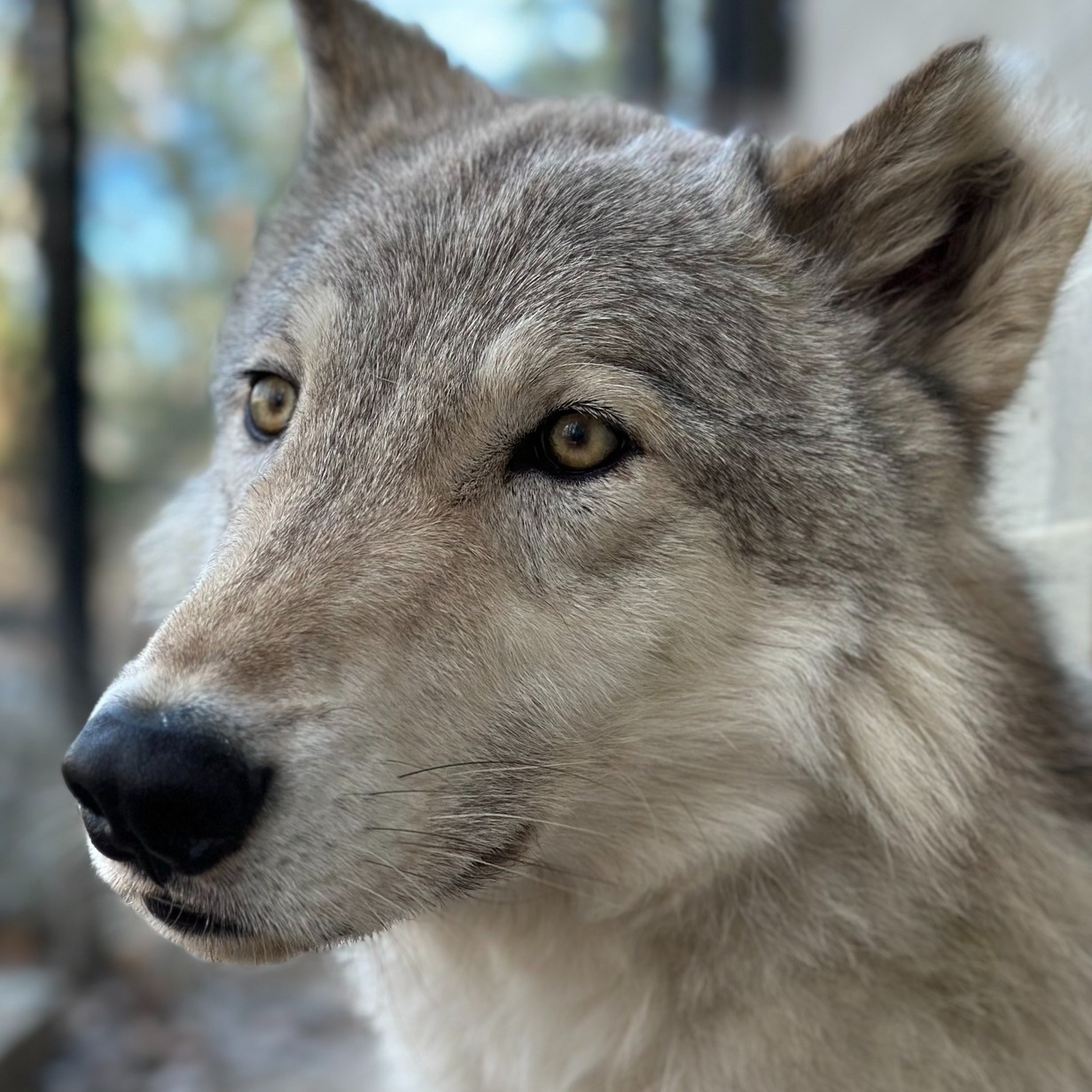– The biology and behavior of the gray wolf, with a specific focus on Simpson, the gray wolf
– The role of modern zoos in wildlife conservation and education, using the story of Simpson
– The impact of human-wildlife interaction and its significance in conservation efforts
The majestic gray wolf, known scientifically as Canis lupus, stands as a symbol of the wild, epitomizing the essence of wildlife conservation efforts. Simpson the gray wolf, a remarkable inhabitant of his habitat, encapsulates the ongoing story of his species’ struggle and resilience. With a story brought to life through a photo by Caregiver Amanda, Simpson’s tale offers a window into the complex world of a keystone species, its imperative to ecosystem balance, and the collective efforts needed to preserve these magnificent creatures for future generations.
Like his wild counterparts, wolves are social animals, and Simpson would naturally be part of a larger pack, a tightly knit group that hunts, plays, and lives cooperatively. Gray wolves are apex predators, which means their presence within an ecosystem is crucial for maintaining the health and diversity of the entire biome. They play a critical role in managing populations of herbivores, which in turn influences vegetation patterns and biodiversity.
Understanding Simpson’s behavior provides a glimpse into the intricate social structures of wolf packs. Wolves communicate through an array of sounds, body language, and scent marking, all behaviors that could be observed in captivity if conditions are appropriate. Observing how Simpson interacts with his environment can provide insights into his health, welfare, and the authenticity of the habitat provided by the zoo.
Modern zoos and sanctuaries have transcended the old models that prioritized public entertainment over the needs of the animals. These institutions are now at the forefront of wildlife conservation, offering refuge to endangered species, conducting essential research, and promoting public education on the importance of biodiversity. In the case of Simpson, the gray wolf, his life in the zoo is an educational tool to highlight the plight of gray wolves in the wild. Educational programs around wolves like Simpson can encourage public engagement and foster a connection between visitors and wildlife, driving home the importance of species conservation.
The gray wolf’s story is intertwined with human expansion and development. Once found throughout North America, gray wolves faced aggressive eradication efforts as human populations grew and the wilderness receded. Zoos provide an opportunity to mimic the wolves’ natural habitat and allow the animals to exhibit natural behaviors, offering visitors a chance to learn about these animals’ lives in the wild and their historical and ongoing conflicts with humans.
However, the captive setting also reminds us of the barriers between humans and the conservation goal. For wolves like Simpson, life in a zoo cannot compare to the freedom of the wild. Yet, it can play a pivotal role in securing the species’ survival and educating the public about preserving natural habits. Additionally, captive breeding programs offer the potential for reintroducing genetically healthy wolves into appropriate wild areas, though such efforts must be carefully coordinated with conservation objectives and public acceptance.
Conservation efforts for gray wolves, including those represented by individuals like Simpson, require a nuanced understanding of their ecological role and the factors threatening their survival. Human-wildlife interaction is a double-edged sword; while it can promote awareness and support for conservation, it can also lead to conflict and misunderstanding. Effective strategies to mitigate negative human impact on wolves include proper wildlife management, habitat restoration, and the enforcement of legal protections.
Simpson’s presence in the zoo bridges the gap between people and nature, offering an engaging platform to advocate for preserving gray wolves and their environments. Programs that allow the public to learn about wolves can shape perceptions and influence actions that benefit conservation. Wildlife educators and conservationists can use the stories of wolves like Simpson to inspire policy and public behavior changes crucial to the ongoing survival of gray wolves in the wild.
In crafting a message of conservation and coexistence, zoos and wildlife parks play a vital role in ensuring that gray wolves, like Simpson, have a future in the carefully curated confines of captivity and in the vast expanses of the wilderness. Only through sustained efforts at education, research, and active conservation can we hope to maintain the delicate balance that allows wolves and humans to thrive together. Simpson, the gray wolf’s story, is not an isolated narrative but a chapter in a larger, ongoing effort to protect the diversity that characterizes our planet’s ecosystems.
*****
Source Description
Hey Simpson👋
📸Simpson the gray wolf. Thank you, Caregiver Amanda, for this photo!


